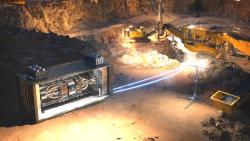
OR WAIT null SECS
© 2024 MJH Life Sciences™ and Turbomachinery Magazine. All rights reserved.
Damage from reverse rotation of compressor during shutdown
Reverse rotation of a compressor and its drive train during turning gear mode can cause major damage. Pressure difference across the compressor casing can cause reverse rotation of complete train, while drive steam turbine is in shutdown condition.
In a case study, steam turbine barring wheel was damaged in a wet gas compressor unit at a coker unit of Bathinda Oil Refinery of HPCL- Mittal Energy Limited, India.
The case study was presented by Arun Kumar and Mahesh Shet of the refinery at the Turbomachinery Symposium.
Steam turbine train was under barring mode (turning gear) after unit shutdown. After three hours into the shutdown, it was reported that the hydraulic barring of turbine rotor had stopped. During investigation, it was discovered that one tooth of barring gear wheel on turbine rotor was broken
The speed trends of turbine and compressor were obtained from DCS and studied in detail. The speed trend indicated that compressor had rotated at 427 RPM during the incident. The flow across the 1st stage casing was measured at 11,013 Kg/hr at the time of incident. Barring gear construction & failure pattern indicated reverse rotation. Compressor rotor is configured as a balanced opposed construction.
Before the incident, sudden depressurization was done by opening the drain line of 2 inches size, at the 1st stage compressor suction. Flow created during depressurization across the impeller eye resulted in rotor reverse rotation during barring gear in engaged condition, causing barring gear tooth damage.
Compressor acted as a driver, due to reverse flow of gas and rotated the coupled unit at 427 RPM in the reverse direction. At the same time, turbine barring gear wheel was in the engaged position with the hydraulic latch. This led to breaking the tooth of the turbine barring gear wheel
Due to the urgency of unit startup, a temporary solution was implemented. The broken piece of gear tooth was weighed and a bolt of equivalent mass was fixed on gear wheel. Manual barring arrangement was made and the machine was commissioned successfully with vibrations within acceptable limits. With above temporary solution the delayed coker unit of the refinery was started successfully.
Rotor was replaced with new rotor during planned shutdown of the unit. Recurrence was avoided by implementing the following logic:
- Closure of 1st suction and final discharge motor-operated valves with coast down after trip / stop, when machine comes to standstill
- Closure of antisurge valve on trip/stop, when speed reaches below 400 RPM
- Drain case pressure only through case diaphragm drains to avoid condensation



